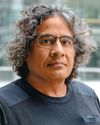
ON THE MORNING of April 5, 2011, in a lane adjoining Jantar Mantar— the protest hotspot of the capital—a small crowd had gathered for the launch of India Against Corruption’s campaign to demand a Jan Lokpal law. (In the coming days, the number would swell exponentially.) Social activist Anna Hazare—the face of the agitation—was seated on a raised platform, having just begun his hunger strike. Standing on the edge of the stage was a man keen to be out of the spotlight.
When media persons approached the small-statured man with a moustache for information, he jumped off the stage and spoke earnestly about the campaign. The man was Arvind Kejriwal, the architect of the agitation. Kejriwal, already a noted transparency activist and Magsaysay award winner, was still not nationally known. That was about to change in a big way.
The IAC campaign was the precursor to the formation of the Aam Aadmi Party, which happened over a year later, and marked the entry of Kejriwal into politics. The anti-corruption crusader and the man who wanted to transform the system was now inside the system.
From a fervent activist who worked out of a one-room office in the congested lanes of Seemapuri to putting together one of independent India’s most impactful agitations and then registering the most shocking of electoral victories in Delhi in 2013, it was a rapid transformation for Kejriwal. His party went on to win Punjab and has been accorded the national party status. It is also one of the most prominent members of the opposition INDIA alliance, and he is one of its best recognisable faces.
Bu hikaye THE WEEK India dergisinin April 07, 2024 sayısından alınmıştır.
Start your 7-day Magzter GOLD free trial to access thousands of curated premium stories, and 9,000+ magazines and newspapers.
Already a subscriber ? Giriş Yap
Bu hikaye THE WEEK India dergisinin April 07, 2024 sayısından alınmıştır.
Start your 7-day Magzter GOLD free trial to access thousands of curated premium stories, and 9,000+ magazines and newspapers.
Already a subscriber? Giriş Yap

Hat-Trick Or Has-Beens?
India look to win their third straight Test series in Australia, but ageing superstars and recent humiliation at home have cast a shadow on their hopes

Constipation Can Put Your Heart At Risk
PEOPLE WITH CONSTIPATION have an increased risk of major cardiac events, including heart attack, stroke and heart failure, especially if they also have high blood pressure, finds an international study published in the American Journal of Physiology-Heart and Circulatory Physiology.

Too Much Sitting Can Accelerate Ageing
SITTING FOR EXTENDED PERIODS can harm the heart and accelerate ageing, even if you are young and get the minimum recommended amount of daily exercise, according to a US study published in the journal PLOS One.

Efficiency and innovation
As health care evolves, professionals must employ innovative methods to refine their skills

Level up
Only 30 per cent of needy patients are able to undergo transplant in India; we need more dedicated transplant centres

HOPE STEMS FROM A CELL
While stem cell therapies have shown success in treating blood disorders, orthopaedic ailments, autoimmune diseases and eye issues, there is hope that they can one day treat patients with heart disease, blindness, Parkinson's, HIV, diabetes and spinal cord injuries

Mind matters
Your mindset can limit or expand your physical ability

Cutting edge
Would you go under the knife if a robot was the one holding it? Or would you say, \"No way, I need a human touch\"? You might have to decide soon because a robot that can imitate skilled human surgeons is already here.

The smallest cut
Minimally invasive surgeries have a bright future, with virtual reality and 3D procedures offering greater precision and AI on the horizon

Signalling a revolution
Canadian scientist and entrepreneur Sachdev Sidhu is focused on bringing cutting-edge antibody engineering to his country of origin